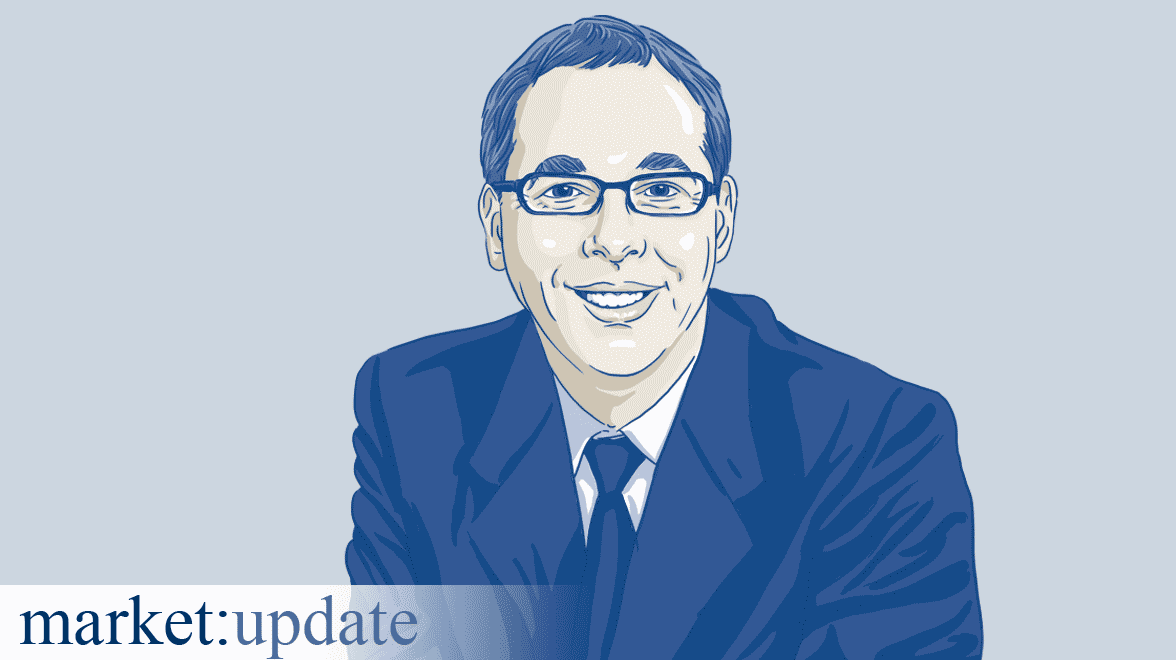Capital Market Outlook 2nd Quarter 2024
Bond markets: Developments in the USA should continue to point the way for Europe
The first quarter was characterized by the negative performance of European government bonds. The ICE BofA Index of German government bonds lost -1.4 per cent, while the ICE BofA Index of eurozone government bonds only recorded a loss of around -0.7 per cent, as Italian government bonds, among others, outperformed German bonds. Experience shows that government bonds from the European periphery benefit more from key interest rate cuts by the European Central Bank (ECB) than government bonds from the core countries. However, although ECB President Christine Lagarde announced at the March 2024 meeting that the ECB would very likely make its first key interest rate cut in June, government bonds from the eurozone were surprisingly unable to benefit from this. This was largely due to developments in the USA: The US economy surprised with strong economic data and high inflation, meaning that financial markets were pricing in significantly fewer key interest rate cuts for 2024. As a result, the yield on 10-year US government bonds rose significantly, which also spilled over to the European bond market.
Developments in the US are likely to continue to set the tone for Europe in the second quarter. Financial markets are still pricing in three key interest rate cuts by the US Federal Reserve of 25 basis points each by the end of the year. However, the growth momentum of the US economy remains high and inflation is stubbornly holding steady at around 3.0 per cent. We therefore see a risk that the US Federal Reserve may not be in a position to cut interest rates in June. In this case, however, a rate cut in September or October would probably not be possible due to the proximity of the presidential elections. Against this backdrop, there is a threat of a further rise in yields on US government bonds – especially as a record amount of more than USD 500 bn in government bonds will be issued on a net basis in the second and third quarters. While yields on long-dated European government bonds are therefore also likely to rise in the second quarter, short-dated European bonds should not be affected as they will benefit from the ECB's forthcoming key interest rate cuts. We expect the ECB to cut the key interest rate by 25 basis points at each meeting after June – i.e. key interest rate cuts totalling 125 basis points to 2.75 per cent by the end of the year.
Stock markets: A lot of optimism priced in
The international stock markets shone with a positive performance in the first quarter. The MSCI Europe rose by 8.4 per cent, the MSCI World by 10.2 per cent and the MSCI Emerging Markets Index by 4.6 per cent – all in local currency. The stock markets were thus unimpressed by the rising yields government bonds and the disappointment that the US Federal Reserve might lower the key interest rate less this year than expected at the beginning of the year. The reasons for the resilience of the stock markets were surprisingly good economic data – particularly from the US – and the expectations of future productivity increases associated with artificial intelligence (AI). AI will massively transform economic and working life in the coming years. This means that not only companies that manufacture products required for AI, such as semiconductors, clouds, software, etc., will benefit, but also companies that use artificial intelligence. For example, AI is already being used today for programming or writing texts.
Economic indicators are signaling continued solid growth in the US and slight signs of improvement in Europe. Against this backdrop, corporate profits are likely to show a moderately positive trend in the second quarter of 2024. At the same time, however, valuations like price-earnings-ratios have risen noticeably recently – so a lot of optimism is already priced in. Against this backdrop, we see only limited upside potential in the second quarter. Of course, it cannot be ruled out that the optimism will turn into euphoria and that significant price gains will also be recorded in the second quarter. However, the risks are more likely to outweigh: for example, surprisingly high US inflation could shatter hopes that the next interest rate move by the US Federal Reserve will be an interest rate cut. The immense volume of US government bond issues could also cause turbulence on the US bond market, which could then spill over to the stock market. There is also a risk of an escalation of the numerous geopolitical crises.
Eurozone economy: Key interest rate cuts expected
The economy in the eurozone brightened somewhat over the course of the first quarter. The strong US economy, a stable European labor market and increased disbursements from the Next-EU-Generation Fund appear to have provided a positive impetus. However, the ECB's high key interest rates are still acting as a brake, meaning that we only expect a moderate recovery and economic growth below potential growth for the time being. This should at least keep the trend of falling inflation intact. Especially as freight rates between Shanghai and Rotterdam have recently fallen noticeably again, meaning that no major impact on supply chains in connection with the crisis in the Red Sea is to be expected. Interestingly, a recognizable regional divergence in economic growth has developed in the eurozone. The two heavyweights Germany and France are bringing up the rear, while some of the smaller member states of the European Monetary Union are showing very positive economic growth. The government austerity measures in Germany to fulfil the requirements of the debt brake are pro-cyclically worsening the economic situation and are therefore counterproductive. In many other member states, however, government fiscal policy is anti-cyclical and is working against the economic weakness, as many countries are now benefiting from the increased disbursements of the Next-EU-Generation Fund.
Due to falling inflation and only moderate economic growth, the ECB is likely to start the interest rate easing cycle in June and cut the key interest rate at each of the four subsequent meetings this year. Overall, we expect key interest rate cuts of 125 basis points to a deposit rate of 2.75 per cent by the end of 2024. The ECB's key interest rate cuts should provide a positive stimulus for the economy towards the end of the year. The savings rate of consumers in the eurozone has been unusually high since the pandemic, which was recently also pushed up again due to the ECB's interest rate hikes. As interest rates fall, consumers are likely to save less again and demand more loans, which should contribute to a noticeable increase in consumer spending and a recovery in the property market in 2025.
US economy: AI boosts investment and growth
The US economy remained resilient in the first quarter and is likely to have grown by around 2.0 per cent. Interestingly, the M2 money supply and bank lending to companies and consumers merely stagnated. This shows that the US Federal Reserve's high key interest rates are having a dampening effect on the economy. Economic growth can therefore only have been caused by a higher velocity of money in circulation. The reason for this appears to be a greater willingness to spend on the part of the state, consumers, and companies. Artificial intelligence in particular seems to be fueling companies to invest heavily. The USA is not only benefiting from the fact that it is a leader in the production of products required for AI, such as semiconductors, data centers, software, etc., but also from the fact that artificial intelligence is diffusing into the economy and capturing more and more companies that can significantly increase their productivity as a result. The macroeconomic data also already shows faster productivity growth. The US economy is therefore only at the beginning of a new technological wave that will continue for several years and change almost all jobs. This also means that there is a good chance of a sustained upturn and dynamic growth. However, resilient growth also has a downside. Inflation reached a low of 3.0 per cent in June 2023 and has more or less moved sideways since then. Stubbornly high inflation is likely to make it more difficult for the US Federal Reserve to lower the key interest rate. We therefore see great risks that the US Federal Reserve will not be able to lower the key interest rate in June. In this case, it is unlikely to be able to cut it in September or October either, as both dates are too close to the presidential elections in November. The US Federal Reserve would then probably not be able to cut interest rates until December. The high level of government debt could also increasingly weigh on the bond market. The net issuance of government bonds in the second quarter is likely to amount to around USD 500 bn. The question here is how receptive the US government bond market is and when turbulence on the bond market will force politicians to introduce austerity measures.
More articles
This document published by Metzler Asset Management GmbH [together with its affiliated companies as defined in section 15 et seq. of the German Public Limited Companies Act (Aktiengesetz – "AktG”), jointly referred to hereinafter as “Metzler“] contains information obtained from public sources which Metzler deems to be reliable. However, Metzler cannot guarantee the accuracy or completeness of such information. Metzler reserves the right to make changes to the opinions, projections, estimates and forecasts given in this document without notice and shall have no obligation to update this document or inform the recipient in any other way if any of the statements contained herein should be altered or prove incorrect, incomplete or misleading.
Neither this document nor any part thereof may be copied, reproduced or distributed without Metzler‘s prior written consent. By accepting this document, the recipient declares his/her agreement with the above conditions.
 Deutsch
Deutsch English
English


